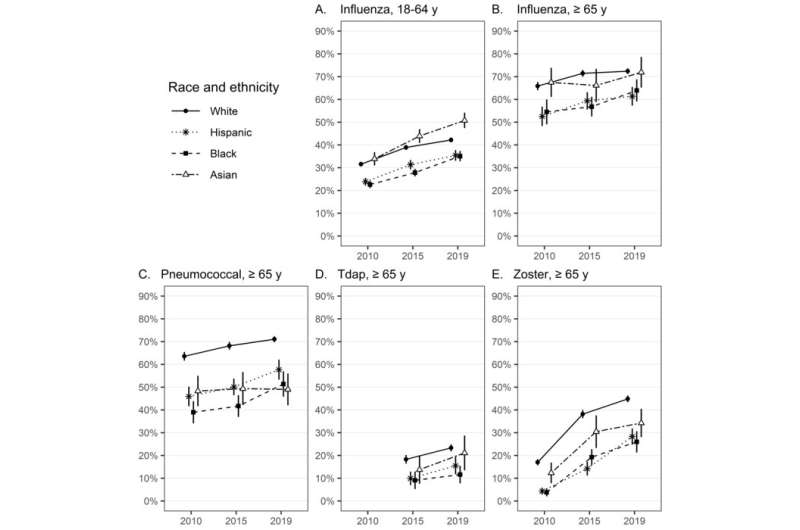
Promoting health equity in immunization rates for the new vaccines against COVID-19 during the pandemic is critical, as individuals from racial and ethnic minority groups and adults living in low-income communities are disproportionately affected by COVID-19, as well as influenza and other vaccine-preventable diseases, according to investigators. Concerted efforts are urgently needed to achieve equity in immunization rates, reports a new study in the American Journal of Preventive Medicine.
Vaccination has substantially decreased deaths due to vaccine-preventable diseases in children to 300 per year in the United States. However, more than 42,000 adults die from vaccine-preventable diseases every year. Influenza causes approximately 140,000–710,000 hospitalizations and about 12,000–61,000 deaths in adults annually, with vulnerable communities at higher risk of influenza hospitalization. Pneumococcal disease causes about 242,000 hospitalizations and 16,000 deaths in adults aged 65 years or more every year. Coronavirus disease (COVID-19) continues to spread across the world and affect millions of individuals, especially among racial and ethnic minority groups.
“Currently, the biggest public health concern we are facing is the COVID-19 pandemic, for which we now have safe and effective vaccines available in the U.S.,” explained investigators Kosuke Kawai, ScD, Institutional Centers for Clinical and Translational Research, Boston Children’s Hospital and Harvard Medical School, Boston, MA, U.S., and Alison Tse Kawai, ScD, RTI Health Solutions, Waltham, MA, U.S.. “Unfortunately, as we observed for vaccines against influenza, pneumococcal, shingles, and Tdap, a combination vaccine that protects against tetanus, diphtheria, and pertussis, adults from racial and ethnic minorities have had lower rates of COVID-19 vaccine uptake.”
The objective of this study was to examine trends in adult vaccination coverage by race/ethnicity and socioeconomic status from 2010 to 2019. Investigators assessed trends over time in vaccination coverage for influenza, pneumococcal disease, herpes zoster, and Tdap using the National Health Interview Surveys (NHIS) from 2010 to 2019. The NHIS is a US-wide survey of the civilian non-institutionalized population conducted through in-person household interviews. It collects data on demographics, health status, insurance coverage, healthcare access, and health behaviors from a nationally representative sample.
The current study shows that racial and ethnic disparities in vaccine uptake (including influenza, pneumococcal, shingles, and Tdap vaccinations) have persisted over the last decade in adults. Black and Hispanic individuals had lower uptake of vaccination than White individuals. Socioeconomic disparities in influenza vaccine uptake have moderately narrowed among adults 18–64 years of age between 2010 and 2019, possibly because of the Affordable Care Act. However, socioeconomic disparities in vaccine uptake have persisted among adults 65 years of age and older.
Source: Read Full Article
